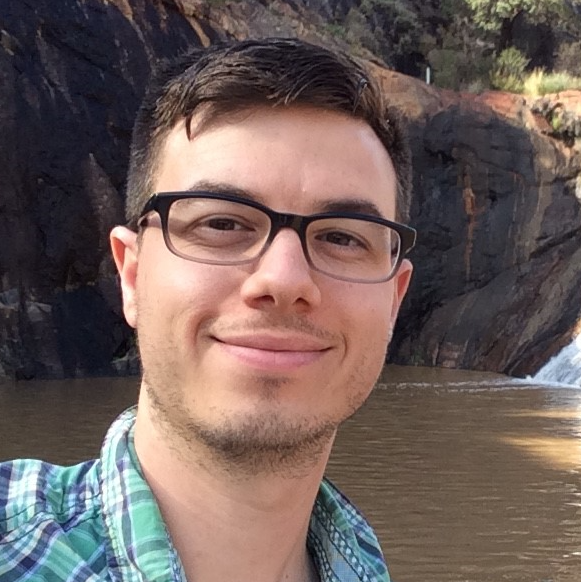by Dr Geoff Wells
Research Fellow in Medical Education, Registrar in Palliative Medicine , Brighton and Sussex Medical School
It’s time to start preparing our medical graduates for death and dying – because it does matter.
Perhaps the best place to start this blog is by describing my own experience, as inevitably this is in part responsible for my vested interest in the subject matter of palliative and end of life care simulation. In 2001 I enrolled onto the BSC in Adult Nursing course based at St Georges Hospital Medical School, and after 8 weeks in the classroom I was sent out to my first ever nursing placement at a busy district general hospital in the greater London area. On my first day I arrived in my white tunic to the ‘Nightingale’ style elderly care ward to which I had been placed. I was introduced to my mentor, a nurse with at least 20 + years’ experience. It was a busy ward, understaffed, cold, peeling plaster walls, and with a myriad of patients with complex care needs. I got stuck in, trying to work out what on earth I was supposed to be doing. My mentor was brash, to the point, and clearly overworked. She had little time for questions from me, but instead strongly encouraged me to undertake a decent amount of background reading to answer my own questions.
By the end of the week I had gotten to know the patients, and one in particular remains stamped onto my memory. An 80+ year old Afro-Caribbean gentleman, first bed on the right as you enter the ward. He had been unconscious from the day I started. I had helped wash and change him through the week. When I arrived for my shift on the Friday, I noted the curtains were pulled around his bed space. I was told to join my mentor in attending to this patient, and once we went behind the curtains there he was, dead.
I had no prior warning of this, I had not picked up in handover that he had died during the night. My shock manifested in me blurting out more questions, to which I received an unfavourable response from my mentor, being told that if I had read my handover sheet, I would not need to ask silly questions. I helped lay the gentleman out, in silence, ready for the porters to take him to the mortuary all the while trying not to let the emotion of the situation overcome me. At the age of 19 I had now experienced seeing my first dead body and it was an unpleasant experience for which I was poorly prepared.
In my final year I was sent on placement to Trinity Hospice. I loved it. It was a very positive experience, not least because of the inspiration of the nursing team and then registrar Dr David Barclay (sorry, name dropped you David!). My experience with David and the team much better prepared me for dealing with death and dying both on a personal and professional level.
Fast forward to 2006 when I returned to St Georges as a medical student. I already knew I wanted to work in Palliative Medicine. My nursing experiences meant that when I qualified in 2011, I was not looking after dying patients for the first time, unlike many of my fellow FY1’s. The point here is that it was the exposure as an undergraduate nursing student that left me feeling better prepared to care for the dying than my 5 years at medical school, where undergraduate exposure was severely lacking.
Continuing reports detailing the distress junior doctors experience when caring for dying patients sadden me, and I feel it is time we start preparing our graduates for these inevitable encounters, irrespective of what speciality they wish to follow. Undergraduate teaching currently still fails to adequately prepare doctors to deliver ‘end-of-life’ care. One of the key factors remains the ethical and logistical challenges of offering all students exposure to actively dying patients.
Despite much evidence supporting simulation-based teaching, its use in medical undergraduate palliative and ‘end-of-life’ care curricula remain low. I wanted to look at whether simulation could improve the confidence and preparedness of medical students to provide holistic care to dying patients and their families, from clinical assessment to symptom management, family communication and care after death.
I was able to get six students to volunteer to undertake individual simulations involving a dying patient (high-fidelity simulator) and family member (actor). Intentional patient death occurred in four of the six scenarios (although unexpected by students). Pre-simulation/ post-simulation thanatophobia questionnaires measured student attitudes towards providing care to dying patients. Thematic analysis of post-simulation focus group transcripts generated qualitative data regarding student preparedness, confidence and value of the simulations.
Our results were encouraging, demonstrating that students felt the simulations were realistic, and left them better prepared to care for dying patients. Students coveted the ‘safe’ exposure to dying patient scenarios afforded by the simulations. This feasibility study has now become the basis of my current Medical Doctorate, and I have expanded this study to include 40 students. I hope that the study can generate statistically significant results supporting the use of simulation in this setting, with potential to inform undergraduate curriculum change to improve how we teach students to care for the dying.
If you found the blog interesting, why not take a look at our study here?